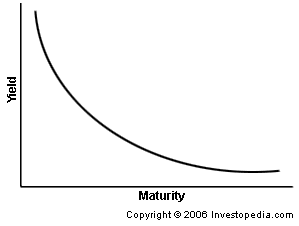Fear of Rising Interest Rates
Interest rates increase was really a hot topic in the last two
weeks since US 10 Years Treasury Note hits above 3% for the first time since 2014. The market also reacts negatively with full of comments on interest risk due to this
increase.
“Auto loans, home mortgages,
and other loans are tied to the benchmark 10-year yield. Investors fear that
higher interest rates could start to eat into corporate profits and also signal
that more inflation is coming.” This is why everyone is paying so much
attention to the 10 years Treasury Note.
Some even talk about “ Inverted Yield Curve “ ….
Below from Investopedia.com
:
What is an 'Inverted Yield Curve'
 |
| image credit to investopedia.com |
BREAKING DOWN 'Inverted Yield Curve'
Historically, inversions of the yield curve have preceded many of the U.S. recessions. Due to this historical correlation, the yield curve is often seen as an accurate forecast of the turning points of the business cycle. A recent example is when the U.S. Treasury yield curve inverted in 2000 just before the U.S. equity markets collapsed. An inverse yield curve predicts lower interest rates in the future as longer-term bonds are being demanded, sending the yields down.
Yield and the Economy
< Inverted Yield Curve>
More reading on the Inverted Yield Curve :
Yield
Curve Inversions and Stocks Are a Toxic Mix ( from Bloomberg.com
by Ben Calrson)
A
Flatter Yield Curve Is No Reason to Freak (from Bloomberg.com
by Barry Ritholtz )
So, one thing for sure is that we have seen rising interest since last year and is going to continue (in slow and accommodative pace) increase in the next two years according to the US FED. Economics 101 teaches us that rising interest rate will increase our borrowing cost and is bad for those with higher gearing or debts.
One of my friends recently asked me if he should sell off all his REITs
as interest rates increase is bad for REIT where their borrowing cost shall increase and
worse still if the REITs are not able to increase the rent or operating income to
mitigate the higher interest cost.
First of all, I told him
that if he is holding all his equity in REITs only, then maybe he should
consider diversifying some to non-REIT sectors. Readers may know that I have
been reducing my exposure to REITs from as high as more than 80% in 2014 to now
about 47% in my portfolio.
Well, we also know that
rising rate means improving economic situation and some sectors will perform
well in a rising interest rate environment e.g. Banking and ….
Obviously, not all REIT will
underperform in such a situation if the supply/demand were in their favour where
it could fetch a higher rent due to a better economy and demand in a certain sector
( sub-sector in REITs). Also, the lease
structure (e.g longer WALE with fix escalation rent) or percentage of debts in
fix rate vs floating etc…which may act as a cushion on impact from this cost
increase.
How Do
Market Interest Rates Affect REIT Returns? From Nareit.com
….and most important thing :
Do REITs Have Moats? From Seekingalpha.com
Ultimately,
having a more diversified portfolio will let you have peace of mind although
you will not have spectacular return even with 1 or 2 multi-bagger in your
portfolio.
My
portfolio’s YTD return is only 1.8 % as compared to STI of around 6.1 % but I
could sleep well at night.
For some of
us, the rising interest rate might have an impact if we still have outstanding
mortgages/car loan/student loan/credit card balance etc, under such circumstance, one will need to be
prudent on your “ balance sheet “ and not to overstretched on your debts.
Cheers !!
Quote Of The Day :
“It’s not what
you own that will send you bust but what you owe.” By Anon

.png)


Hi STE,
ReplyDeleteFortunately enough, I do not have any exisiting debt which will impair my balance sheet from the rising interest rates. But I guess it’s too early for me to even talk about it yet!!
Having that said, it might seem much better for cash rich company today as they require much lower borrowing cost than those who needs the utilize on borrowings to fund their business or investments!!
Hi sleepydevil,
DeleteGreat !! glad to hear that you are in very good shape on your "balance sheet" , yup, those cash rich companies may be in better position than those having high debts or gearing , but at the same time they may also having problem of how to utilize the cash in more efficient way ,,if there is no better investment out there ... should they pay more dividend or having share buyback program ?? ummm...
Cheers !!
when the US TB hit 3%, many economist is suggesting that as long as the economy is growing then the market should be supported. so question is what wld be the number that trigger a more serious signs of market is heading into recession
ReplyDeleteHi XIY,
DeleteThat's very true , the 3% is just a benchmark to compare the long term average interest rates , the figure should not be deemed as a "magical number" to gauge when will recession come , in an irrational market, the rates could go much higher before market or economy's direction turn , as you said , there must be a " trigger point " or events that make the make the chance from full optimism to pessimism ...that's " mr market "
Cheers !! :D